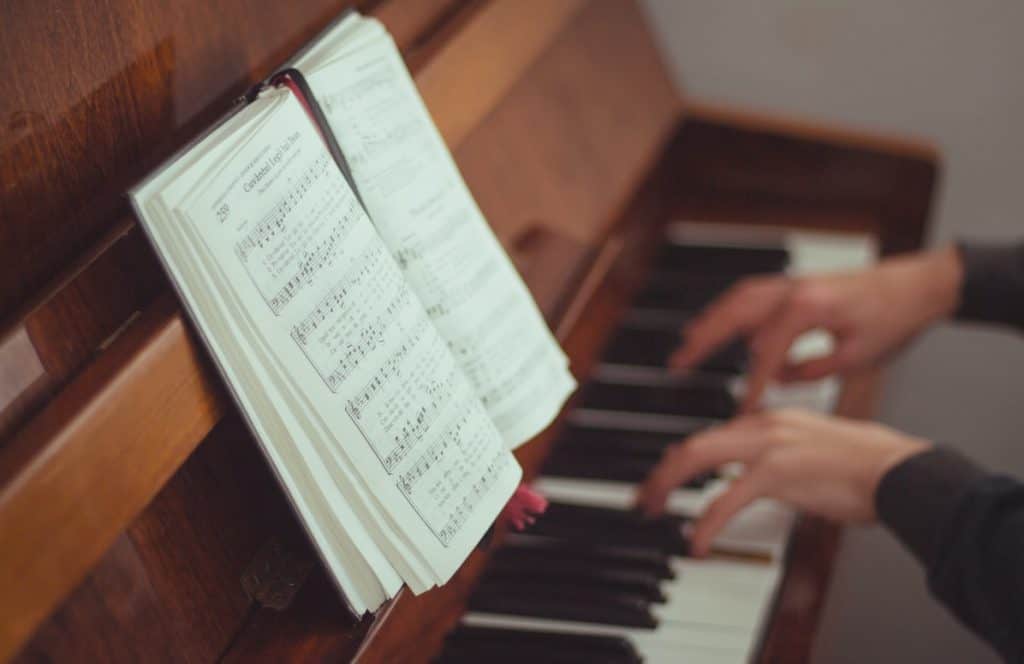In the enchanting world of music, the augmented chord stands out as a unique and mystical triad, distinct from the common major and minor chords. It captivates with its unconventional structure, where the fifth note is raised by a half step, creating a sound that transports listeners to a realm of sonic intrigue and wonder. This chord, with its ability to evoke deep emotions and add a touch of the ethereal to any composition, plays a pivotal role in enriching musical narratives, making it a fascinating subject for exploration in the art of music theory and composition.

What is an augmented chord
In the enchanted realm of music, an augmented chord emerges as a mysterious triad, casting a spell with its unique blend of notes. Unlike its more familiar cousins, the major and minor chords, the augmented triad dances to the beat of its own drum, boasting a composition that defies the ordinary.
Imagine standing at the edge of a shimmering lake under a full moon, the surface rippling with every note played. This chord is a musical mirror reflecting a world slightly askew, where the ordinary fifth note has ascended by a half step, transforming a simple C major chord into a captivating C, E, and G♯. This alchemy of sound, this augmented enchantment, is a gateway to realms unexplored, inviting us to venture beyond the veil of the commonplace.

How many augmented chords are there?
In the vast universe of sound, augmented chords form a constellation of twelve celestial bodies, each one illuminating the musical skyline from its unique position. However, the magic of these chords lies not just in their number but in their symmetrical nature, creating a kaleidoscope of possibilities.
Picture a wheel, its spokes connecting at the hub, symbolizing how these twelve chords rotate in harmony. Each chord, a chameleon, can don the guise of its neighbors, resulting in only four distinct sonic landscapes. This symmetry is a labyrinthine dance, where each step reveals a new path, yet each path leads to a shared destiny, weaving the fabric of musical lore with threads of major thirds.
Spelling augmented chords
The C augmented triad is spelled C – E – G♯. The interval from C to E is a major third. The interval from E to G♯ is a major third. And, the interval from G♯ to C is a major third. This means that the augmented triad is built entirely in major third intervals (C – E – G♯), just as the diminished chord is built entirely in minor third intervals (C – E♭ – G♭).
If we begin the augmented triad from E, we spell it E – G♯ – B♯ (C). If we begin the augmented triad from G♯, we spell it G♯, B♯, D♯♯ (or G♯ – C – E). See how all three chords contain the same notes? We just need to spell them differently so that we maintain the augmented triad formula of 1 – 3 – ♯5.
With all that said, there are twelve augmented chords, one for each root note. However, because of the symmetrical nature of the augmented triad, there are only four unique sets of notes.
The augmented chords
C augmented: C – E – G♯
C♯ augmented: C♯ – E♯ – G♯♯
D augmented: D – F♯ – A♯
D♯ augmented: D♯ – F♯♯ – A♯♯
E augmented: E – G♯ – B♯
F augmented: F – A – C♯
F♯ augmented: F♯ – A♯ – C♯♯
G augmented: G – B – D♯
G♯ augmented: G♯ – B♯ – D♯♯
A augmented: A – C♯ – E♯
A♯ augmented: A♯ – C♯♯ – E♯♯
The sets of augmented chords move in patterns of major thirds. For example, C augmented, E augmented, and G♯ augmented all contain the same pitches. The second set is composed of C♯ augmented, F augmented, and A augmented. The third set comprises D augmented, F♯ augmented, and A♯ augmented. The final set contains D♯ augmented, G augmented and B augmented.
Look at the circle
If we draw these four sets of augmented chords on the circle of fifths, it looks like this:

When should I use augmented chords?
Augmented chords, like the keys to hidden doorways, beckon us to use them as we traverse the musical landscape, seeking to unlock moments of tension, anticipation, and ethereal beauty. They are the brushstrokes that add depth to the canvas of our compositions, the spice that transforms a meal into a feast for the senses.
Employ these enigmatic chords as you would a lantern in the dark, to illuminate the path from one musical idea to the next, to elevate a simple progression into a journey through uncharted territories. They are the whisper in the wind before the storm, the fleeting glance that speaks volumes. In moments of transition, when the music seeks to soar beyond the mundane, the augmented chord is your ally, guiding your melody to new horizons.
What emotion do augmented chords have?
Augmented chords are the poets of the musical spectrum, their notes weaving tales of longing, suspense, and unresolved yearnings. They are the sigh in the night, the touch of mist on your skin at dawn, evoking emotions that linger on the edge of dreams. These chords do not merely speak; they evoke a tapestry of feelings, painting every scene with shades of mystery and anticipation.
In their resonance, we find the heartbeats of stories untold, emotions uncharted, beckoning us to feel deeply, to listen with more than just our ears. They are the musical embodiment of twilight, where light and shadow dance in eternal balance, inviting us to explore the spaces between.
What makes a chord augmented?
The secret to the augmented chord’s mystique lies in its composition, a delicate balance of notes that defy expectation. At its heart, this chord is a rebel, a rule-breaker, challenging the norms with its unconventional structure. By elevating the fifth note a half step higher than in a major chord, it transforms the familiar into the extraordinary.
This act of musical defiance, this slight shift in pitch, is akin to altering the course of a river, creating new pathways for our emotions to flow. It is this deviation from the expected, this leap into the unknown, that imbues the augmented chord with its power to captivate and enchant.
What is the difference between diminished and augmented chords?
While the diminished chord whispers tales of tension and unease, its notes a tightrope walk of minor thirds, the augmented chord sings of expansion and transformation, its journey marked by major thirds that stretch toward the horizon. The diminished chord is the shadow, its essence a reflection of paths untaken, opportunities lost. The augmented chord, however, is the light breaking through the clouds, a symbol of potential and change. Together, they dance a duet of dynamic interplay, embodying the duality of existence, the eternal dance of light and shadow.
What are augmented chords on piano?
On the grand stage of the piano, augmented chords manifest as keys that, when pressed, release spirits of sound into the air. Imagine your fingers as conduits of magic, each chord a spell cast, resonating through the strings and into the heart of the listener. These chords are not mere combinations of notes; they are invitations to aural adventures, each key a portal to a realm of augmented reality.
Playing them is like painting with sound, each stroke adding a hue of the extraordinary to the canvas of your musical expression. In this realm, the piano is not just an instrument; it is a storyteller, and augmented chords are its most compelling tales.
What is the rule for augmented chords?
The rule for conjuring augmented chords is simple, yet profound: to elevate the fifth, to reach beyond the ordinary. This principle serves as a beacon, guiding musicians in their quest to harness the power of augmentation. It is a reminder that beauty often lies in deviation from the norm, in the courage to alter what is expected.
This rule is not just a formula; it is a philosophy, a way of listening to the whispers of creativity that urge us to explore the spaces between notes, to find harmony in the unexpected. It challenges us to ask, “What if?” and to answer with a leap of faith into the sonic unknown.
What is an example of an augmented chord?
An example of an augmented chord is the enigmatic C augmented, a triad composed of the notes C, E, and G♯. This chord is a beacon in the night, a lighthouse guiding us through the fog of the familiar into the embrace of the new. It is a chord that refuses to be confined, its sound is a declaration of independence from the conventional.
Playing it is akin to unlocking a door to a room bathed in a different light, where everything you thought you knew is seen anew. The C-augmented chord is not just a collection of notes; it is a journey, a challenge, a question posed to the soul of the musician and the heart of the listener.
What intervals make up an augmented chord?
The foundation of an augmented chord is built upon the intervals of major thirds, a staircase leading upwards into the expanse of the musical ether. This chord is a construction of ambition and desire, each interval a step away from the mundane towards the sublime. It is a chord that stretches the boundaries of harmony, pushing beyond the limits of traditional structure.
In this realm, intervals are not just distances between notes; they are bridges connecting worlds, paths that lead us from the known into the realm of infinite possibility. The augmented chord, with its major thirds, is a testament to the power of music to transcend, to elevate, to augment reality itself.
Conclusion
Augmented chords are a special and rare tonality. They are often used to elicit feelings of surreality and ethereal space. To some, they might sound uselessly dissonant and annoying. However, when used purposefully, they can add great character and depth to your piano playing!
If you are interested in learning more about music theory, harmonies, and scales, Skoove can help you reach your musical goals in an efficient and fun way.
You can always learn more about music theory and more advanced chords with Skoove. Check out the interactive lessons on chords, scales, and progressions and dive deeper into music theory today!
Author of this blog post

Eddie Bond is a multi-instrumentalist performer, composer, and music instructor currently based in Seattle, Washington USA. He has performed extensively in the US, Canada, Argentina, and China, released over 40 albums, and has over a decade experience working with music students of all ages and ability levels.















